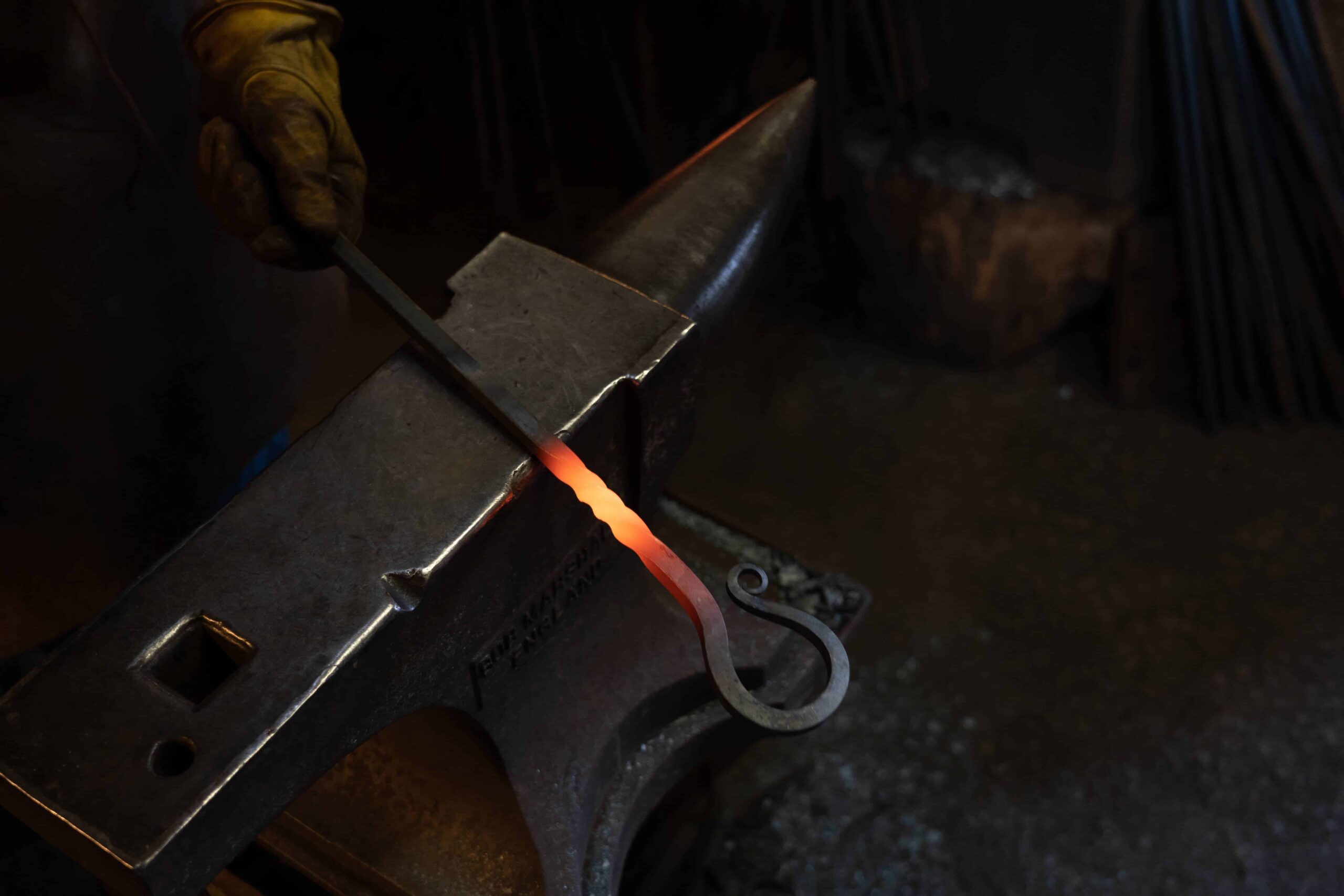
Wrought iron has been used in construction as early as 2000 BC and very commonly in the nineteenth century. As technology advanced in the twentieth century easier and less expensive alternatives took over and this method of blacksmithing lost its popularity and led to the end of wrought irons large scale commercial practice in the mid-seventies.
However, looking to the current day, the industry has had a resurgence and is as popular as ever. Nothing can compare to traditionally made wrought iron products and wrought iron doors, windows and balustrades are as popular as ever!
Wrought Iron is made up of mainly elemental iron and minimal amount, around 1-2%, of added slag and to make it true wrought iron product, the metal must go through a variety of different steps, processes and treatments.
Slag is the by-product of iron-ore smelting and generally consists of a combination of silicon, sulphur, phosphorus, and aluminum oxides. This slag is what makes wrought iron both corrosion-resistant and resistant to shock fatigue.
The metal is hot dip galvanised, which is the process of coating iron and steel with zinc which fuses with the surface when the metal is immersed in molten zinc and when exposed to the atmosphere, the pure zinc reacts with oxygen to form zinc oxide. In turn this reacts with carbon dioxide to create zinc carbonate.
Wrought iron is a highly malleable metal. This means that it can be heated, re-heated, and worked into all different shapes – the more wrought iron is worked the stronger it becomes. As it has less carbon than other metals like cast iron, it is a softer more ductile material (ductile is the ability to be made into a thin wire without losing strength). Wrought iron’s fibrous appearance is its key defining characteristic.
Bring Your Wrought IronProject to Life – Home or Business Premises
Wrought iron is an art form with an expansive history behind it. According to the history books, the earliest iron gates and fences, which denoted triumphs, power, and money, were built under the Roman Empire. Wrought iron gates from the Middle Ages, which are still present in many of Europe’s historic towns and cities, were employed for both security and ornamental functions.
In today’s modern homes and business premises, you can still find many wrought iron gates that mimic the designs available in the Victorian era, with plenty of gothic character and magical charm. These materials nonetheless offer a strong level of security while being substantially lighter than conventional iron gates.
Visit our Melbourne or Sydney showroom to see some beautiful examples of the wrought iron process! Debating whether to get wrought iron over steel products? Find out the difference here!

